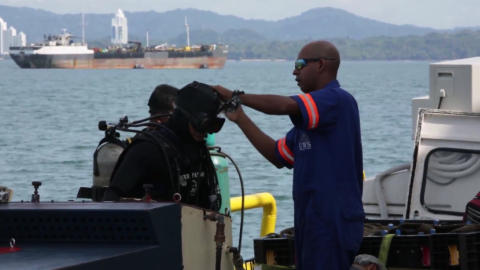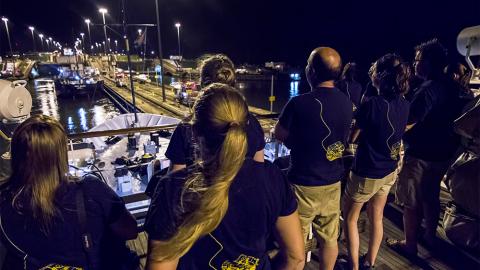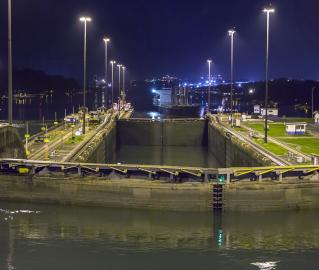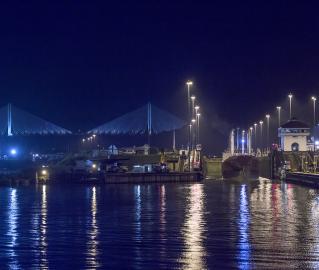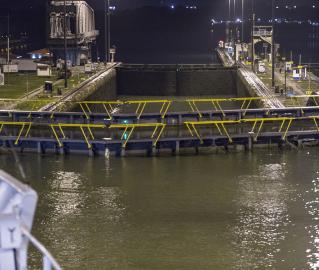Our Historic Panama Canal Transit
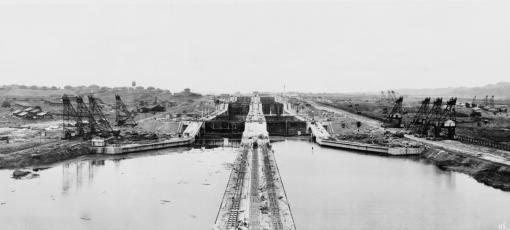
In past seasons, the Exploration Vessel (E/V) Nautilus and the Corps of Exploration have traveled through the Black Sea, the Mediterranean, the Gulf of Mexico, and the Atlantic Ocean exploring areas of geological, biological, and archaeological interest. May 28th of this year will mark a historic event for the Nautilus – the beginning of exploration in the Pacific Ocean, starting with a transit through the Panama Canal.
Why the Panama Canal?
Panama is an isthmus, or a narrow strip of land, connecting North America to South America. As early as the 16th century, explorers and governmental leaders have been interested in the area as a waterway for ships to travel between the Atlantic Ocean and the Pacific Ocean. Instead of sailing all the way down to Cape Horn at the southern tip of South America, transiting through the Panama Canal can trim thousands of miles off of a marine voyage. Nicaragua was also considered by the U.S. as a potential waterway site, but French engineer Philippe-Jean Bunau-Varilla, who had been involved with France’s earlier attempts to construct a canal, successfully lobbied for the U.S. to focus on building a canal in Panama.
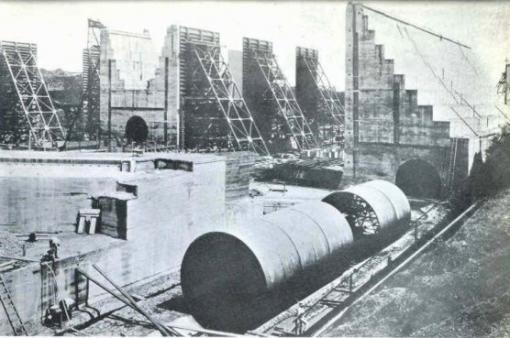
Did you know that Richard Halliburton swam through the Panama Canal in 1928?
Halliburton paid 36 cents as a toll for his passage through the Canal. Today, approximately 13,000 – 14,000 ships travel through the Panama Canal each year. Each ship pays a toll according to its weight and cargo, providing a revenue of about $2 billion per year. Within the next ten years, the toll revenue is expected to increase to about $6 billion annually.
How does it work?
The Panama Canal uses water flowing through a series of three locks to raise and lower ships 85 feet (25.9 meters) above sea level. The water to operate the lock system originates at the Chagres River, which flows into two artificial lake – Gatun Lake and Lake Alajuela. When the ship enters the first chamber, a gate closes behind it, and water fills the chamber to the water level of the second chamber. The gate opens so the ship can continue into the second chamber, and the process repeats for the next lock system. After exiting the third chamber, the ship then enters Gatun Lake, where it proceeds to the descending lock series, and will exit into the Pacific Ocean. Each lock is 110 ft wide and 1,050 ft long. Many ships are built to maximum capacity, and are referred to as “Panamax.” Additional locks that would allow for “Post-Panamax” ships to pass through, are currently under construction.
Crossing through the Panama Canal is a historic event for the E/V Nautilus and the Corps of Exploration. Going through the Canal will save a lot of time that would otherwise have been spent transiting around the tip of South America. This passage will enable the Nautilus to quickly cross from the Atlantic Ocean to the Pacific Ocean, and continue our exploration at the Galapagos Islands.
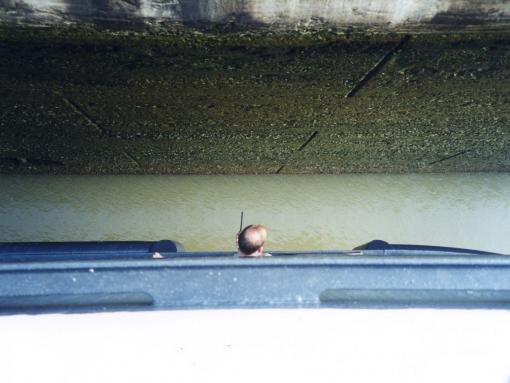
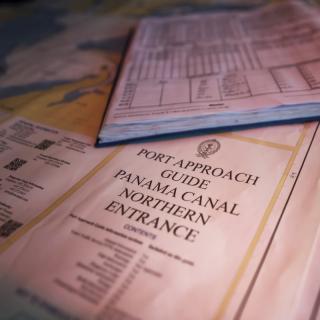
Panama Canal Crossing & Transit to the Galapagos
Following our work in the Gulf of Mexico, the E/V Nautilus will transit from Galveston, TX to Panama and then transit through the Panama Canal, a historic crossing that signals the entry of Nautilus to its future work in the East Pacific region. The Panama Canal officially opened on August 15, 1914, one of the largest and most difficult engineering projects ever undertaken. The shorter, faster, and safer route to the U.S.
